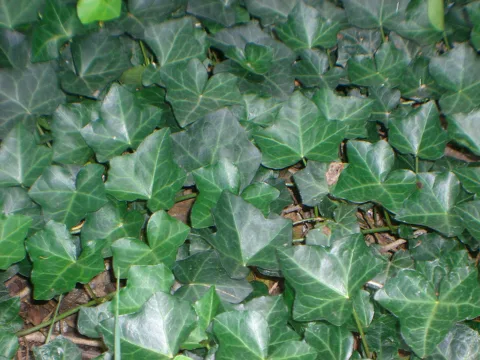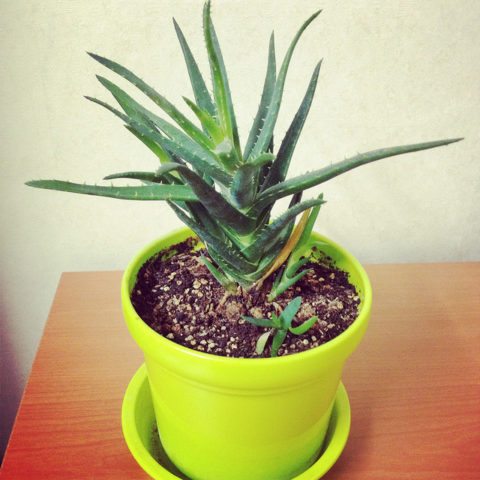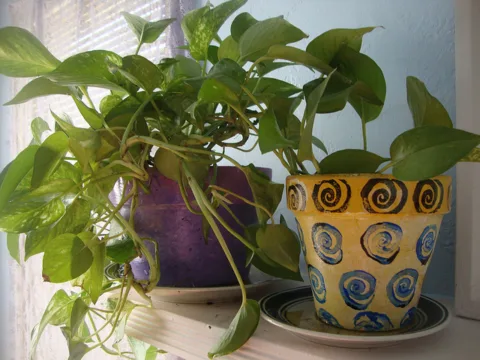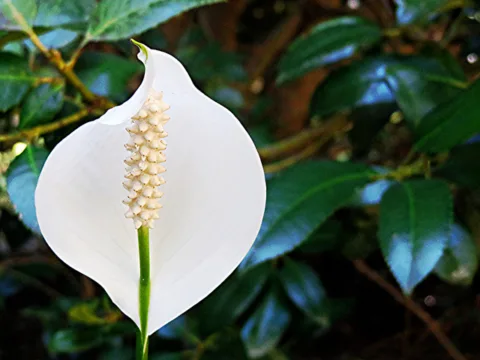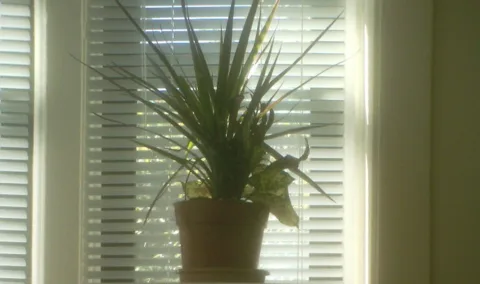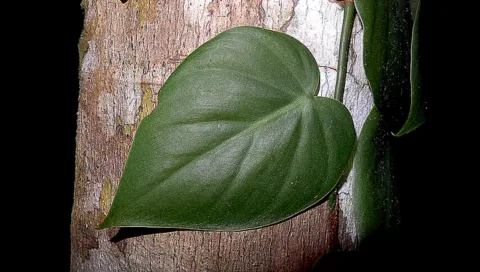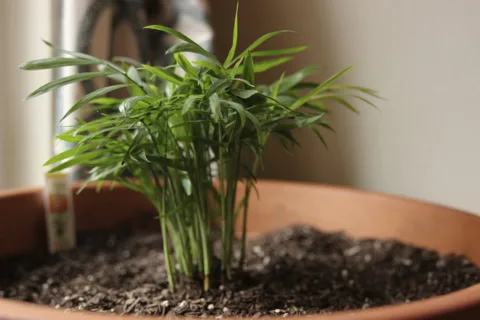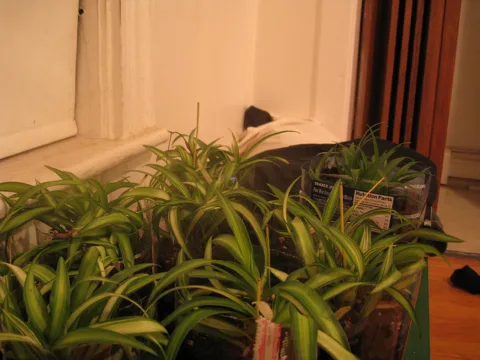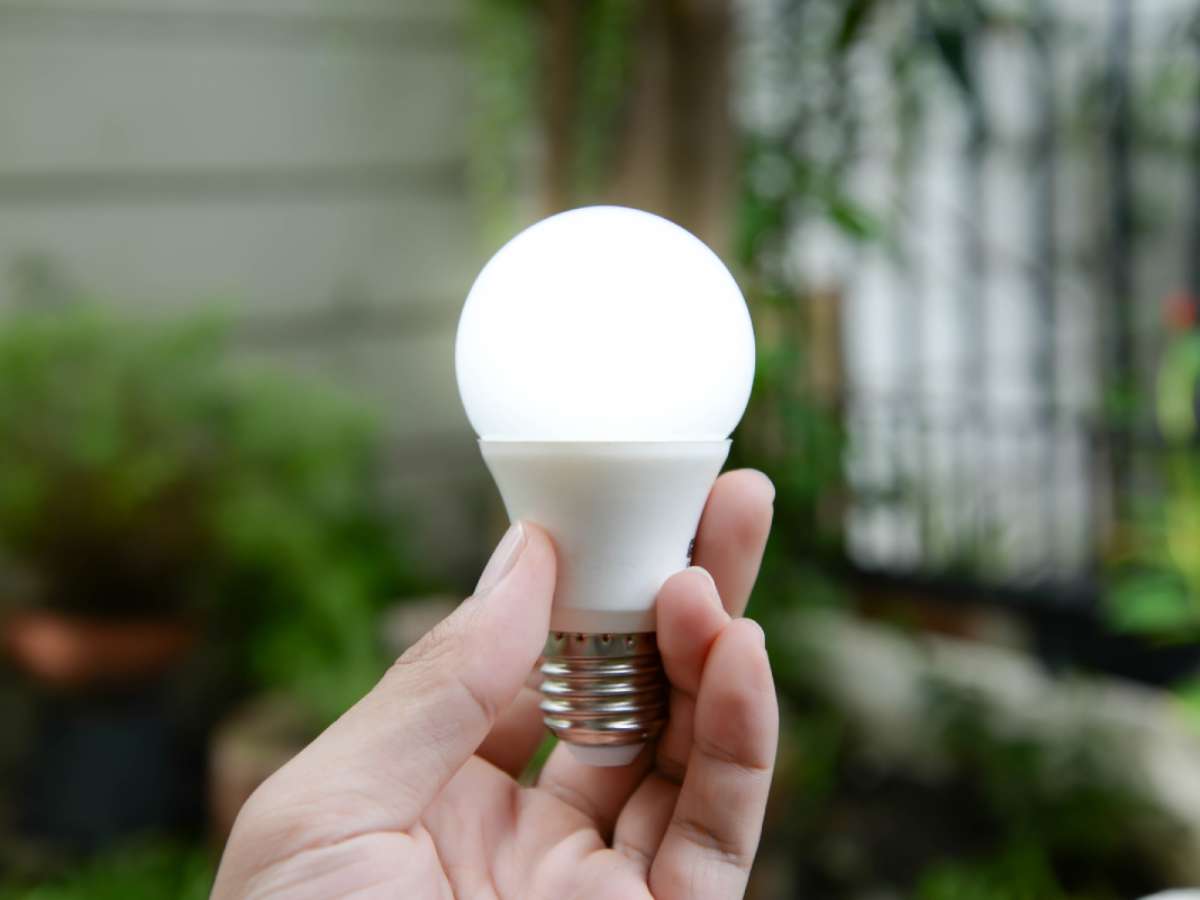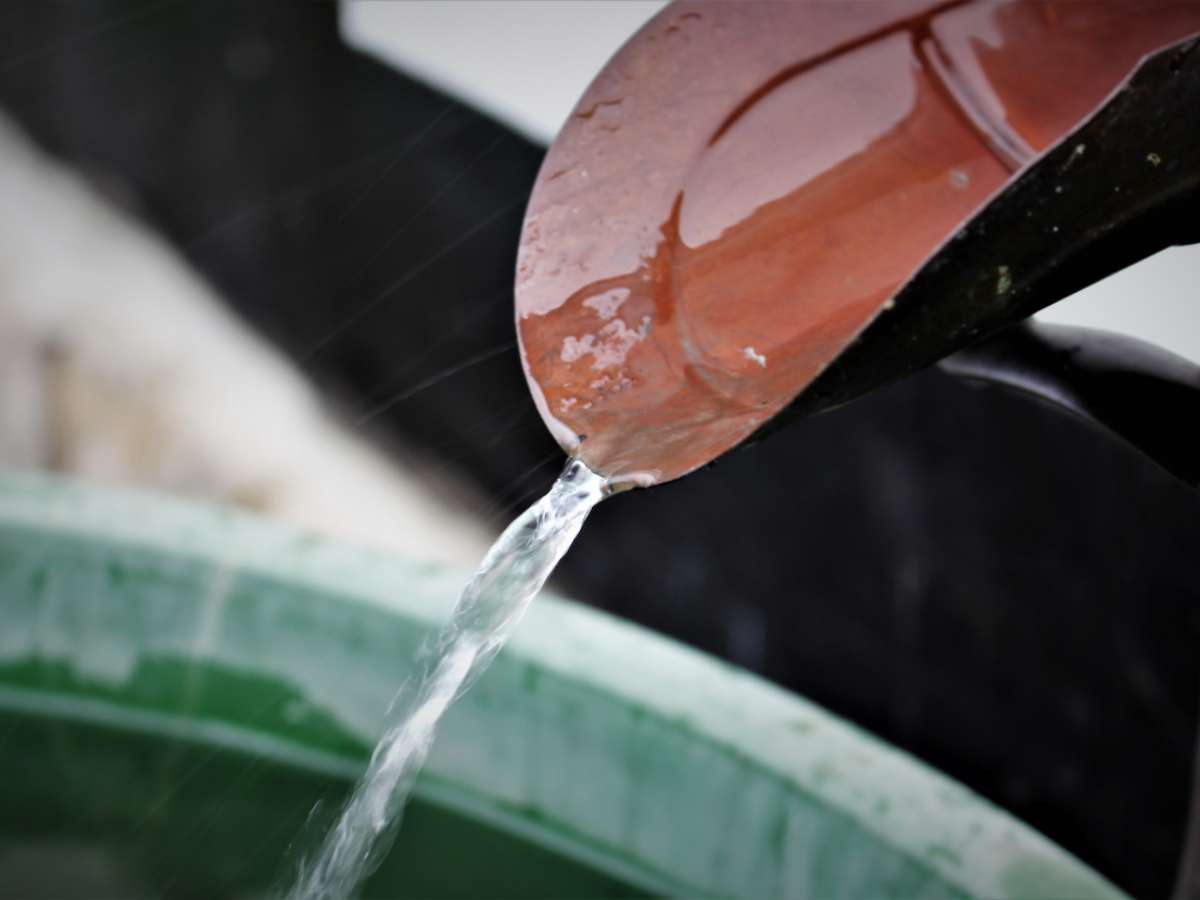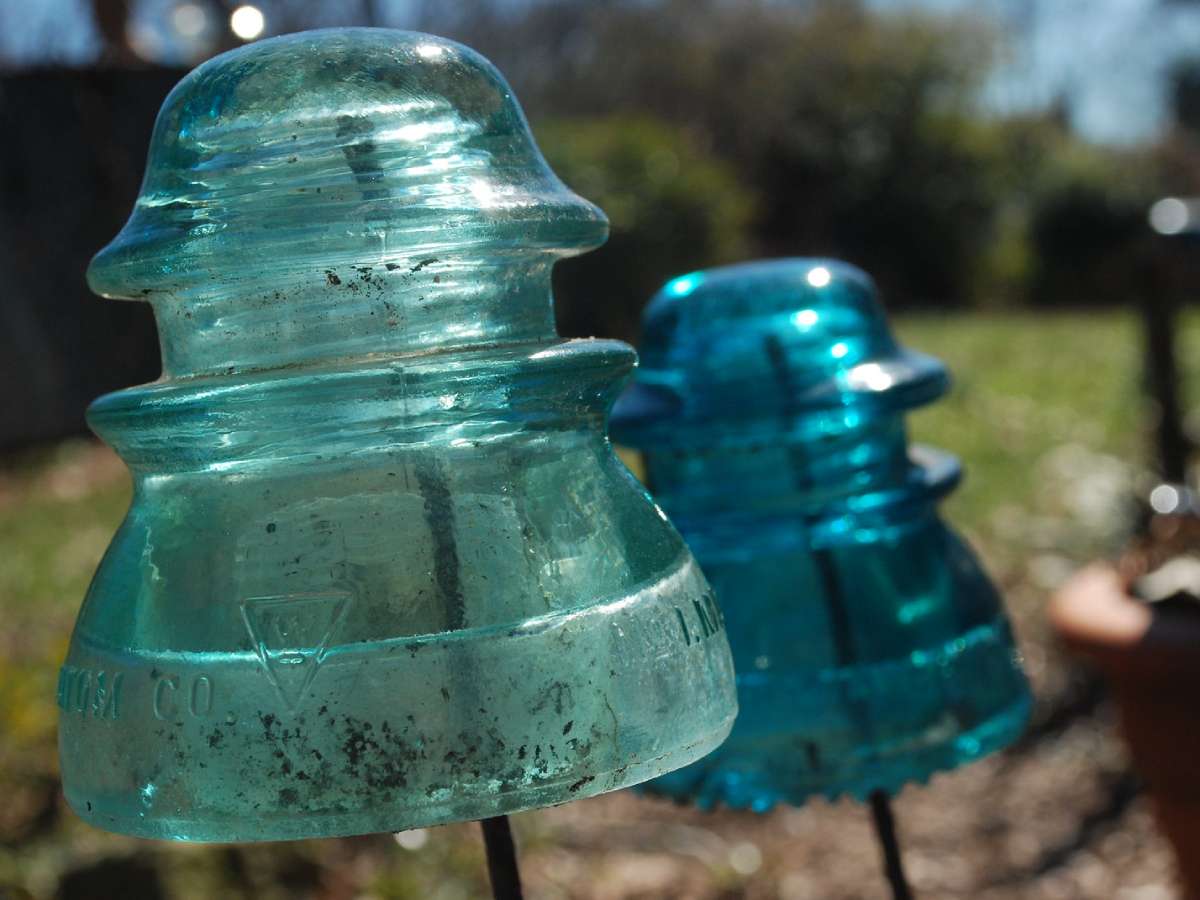Did you know that indoor plants can clean the air and make the environment inside your home healthier?
Plant-filled rooms contain up to 60% fewer airborne molds and bacteria than rooms without plants. Source
NASA studies have confirmed that houseplants have remarkable air-cleansing capabilities.
Just 1 potted plant located every 100 square feet can make a difference in the air quality inside your home.
The ratio of potted plants per 100 square feet is roughly like having 1 potted plant in a small bedroom or 4 in the area of a standard 2-car garage (…though I’m not sure how many people put houseplants in their garages).
Some potted plants can eliminate up to 87% of indoor air pollutants within just 24 hours!
Which Indoor Air Pollutants Do Plants Remove?
While all houseplants absorb carbon dioxide and release oxygen into the air, the following 10 plants eliminate dangerous household chemicals and pollutants from the air like:
- Benzene (found in plastics, rubbers, nylon & synthetic fibers, pesticides, lubricants, dyes, detergents, cigarette smoke)
- Carbon monoxide (from fuel-burning devices including furnaces, space heaters, cooking stoves, water heaters, clothes dryers, fireplaces, charcoal grills, wood stoves, lawn mowers, power generators, camp stoves, motor vehicle, power tools with internal combustion engines, cigarette smoke)
- Formaldehyde (found in carpet & upholstery, cosmetics, pressed-wood products, dish detergents, glues & adhesives, fabric softeners, paper coatings, perma-press fabrics, carpet cleaners, disinfectants, insulation materials)
- Trichloroethylene (found in drycleaning materials, disinfectants, paint strippers & varnishes, dyes, perfumes, pharmaceuticals, adhesives, soaps)
- Xylene (found in synthetic fragrances, paints, inks)
The indoor pollutants that affect health are formaldehyde, Volatile Organic Compounds or VOCs (benzene and trichloroethylene or TCE), airborne biological pollutants, carbon monoxide and nitrogen oxides, pesticides and disinfectants (phenols), and radon. Source
10 Best Indoor Plants That Clean The Air
Wondering which houseplants are the best at eliminating toxins from the air in your home?
Here are the top 10 plants that will make your indoor air cleaner…
#1 – English Ivy
Not only is English ivy a well-known vine that adorns walls at countless universities and country clubs, but NASA says it’s the best air-filtering plant for the home.
English ivy has the incredible ability to absorb the dangerous chemical formaldehyde.
Plus, English ivy is very easy to grow!
While it works great as a floor plant, my favorite way to grow English ivy (or any vine, for that matter) in the house is to plant it in a hanging pot.
Moderate temperatures and medium sunlight are the best conditions for growing English ivy indoors.
#2 – Aloe Plant
Aloe plants are ideal for ridding the air of pollutants from chemical cleaning products (which pretty much describes most of the spray cleaners I used to buy for my home).
Here’s something cool — the aloe leaves will start spotting brown if there are too many harmful pollutants in the air.
Beyond clearing the air of various cleaning chemicals, aloe plants are also superb (and probably most well known) for their healing properties.
The aloe vera gel inside the plant’s leaves has anti-inflammatory compounds that can soothe sunburns, wounds, cuts, and other abrasions.
I remember the first time I grew an aloe plant — I was 12 years old and was fascinated at how the gel in one of the leaves I snapped off the plant made a paper cut feel better. Here are 40 amazing uses for aloe vera!
I’ve never found aloe plants hard to grow, but they do need a lot of sun.
#3 – Snake Plant
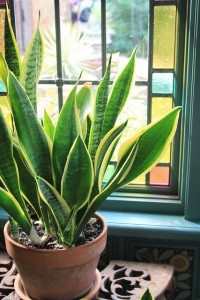 There are actually 2 other common names for the snake plant: mother-in-law’s-tongue and, in some countries, Saint George’s sword.
There are actually 2 other common names for the snake plant: mother-in-law’s-tongue and, in some countries, Saint George’s sword.
This plant certainly has some colorful names to say the least, but whatever you call it, snake plants have at least 2 good things going for them:
- They don’t need very much light or water to thrive, making them a great choice for darker areas of your home.
- They take in carbon dioxide and release oxygen at night (most other plants do that during the daytime), so they’re great plants for bedrooms — to keep the air a little healthier while you sleep.
#4 – Golden Pothos
Golden pothos is another plant that is great for cleaning formaldehyde from the air, in addition to removing carbon monoxide and benzene.
This plant makes a great hanging vine.
It’s perfect for cooler temperatures and areas of the home with lower sunlight.
Perhaps the best news of all: golden pothos is a great choice if you don’t have a green thumb because it’s incredibly easy to grow!
#5 – Peace Lilies
You often see peace lilies in “Get Well,” “Sympathy,” and “Friendship” flower bouquets, and for good reason: they’re beautiful plants that usually evoke happy feelings.
But did you know that peace lilies can also scrub pollutants from the air?
This plant removes 3 of the most common VOCs — formaldehyde, benzene, and trichloroethylene!
Peace lilies require a lot of water, but not a lot of sunlight. It’s worth noting that these plants are poisonous to pets.
#6 – Rubber Plants
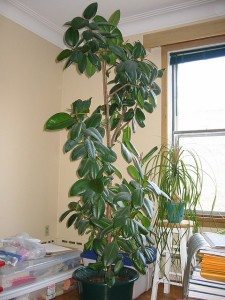 Oops, there goes another rubber tree plant…
Oops, there goes another rubber tree plant…
Sorry, I couldn’t resist quoting Frank Sinatra’s classic 1959 song “High Hopes.”
Yet, any green thumb (or less-than-green thumb) can have high hopes of success when growing rubber plants.
They are really easy plants to grow (one of mine lasted 15 years) and fare well in dim areas of the home. Rubber plants even handle cooler temperatures without problems.
And now, let’s take a brief intermission from this list with a soaring rendition of, you guessed it, “High Hopes”…
#7 – Red-Edged Dracaena
I’ve bought a few of these plants over the years. They look like little palm trees.
It’s a tropical plant that’s native to nations in and around the Indian Ocean.
While I learned the hard way that they don’t do well outdoors in areas that see frost and freezing temperatures (see the word “tropical” above), they make great indoor plants.
Red-edged dracaena plants can grow very tall, easily reaching the ceiling.
They do the incredible task of removing toxins such as xylene, formaldehyde, and trichloroethylene from the air.
Thank these guys for their hard work by keeping them in plenty of sunlight.
#8 – Philodendron
Here’s a classic indoor houseplant.
The heart-shaped leaves of philodendrons give these plants a distinctive look, and their vines make this household favorite an ideal candidates for hanging pots.
The philodendron is great at ridding the air of formaldehyde.
Philodendrons can also live for many years — so long as they are provided with moderate amounts of water and a fair amount of sunlight. The leaves themselves can grow up to 12 inches long!
#9 – Bamboo Palms
These exotic-looking plants get high marks for their ability to eliminate harmful pollutants from the air such as benzene and trichloroethylene.
Bamboo palms are slow-growing plants. They need to be kept in a spot that is shaded or receives only indirect sunlight, and they must be well watered.
#10 – Spider Plant
Though some might find its name creepy, the spider plant is actually one of the most popular types of houseplants around.
This attractive, grass-like plant is easy to grow and ideal for pots on the floor as well as hanging pots.
The spider plant is also superb at cleaning the air of pollutants such as benzene, carbon monoxide, xylene, and formaldehyde.
Spider plants placed in closed chambers with 120 parts per million of carbon monoxide remove 96% of the contaminant in 24 hours. Source
More About Air Cleaning Plants
We’ve shared the top 10 houseplants that clean the air. Here are some more ways to green the air inside your home:
- Top 7 Plants That Remove Formaldehyde From The Air
- One Man’s Experience: The Only 3 Indoor Plants You Need
- How To Green Your Indoor Air
- Fun With Houseplants Inside Your Healthy Home
- How To Go Green With Plants
- Top 50 Plants That Keep The Air Inside Your Home Clean
- Plants That Remove Carbon Monoxide From The Air
As an advocate for good health, I usually try to choose the ‘greener’ option over other more dangerous and/or wasteful options. Generally speaking, if it’s bad for your health or the planet, I try to avoid it. In my effort to live green, I like to find new (healthier) budget-friendly ways to do things — from cleaning to recycling to home decorating. My goal is to help you take the chore out of living green by sharing fun new ecofriendly ideas that you can try today… or any day! My all-time favorite way to live green is to repurpose items and give them a new use — and I’ve written a lot of DIY articles showing how I’ve done it.


